Tomorrow the AT board meet again and the
Closed Agenda
Items for Approval/Decision
- Northcote Point Ferry Wharf – This will likely decide the fate of the currently closed wharf. It’s noted that John Gillon (Kaipatiki Local Board), Cr Richard Hills and Dan Bidois (MP for Northcote) are attending to speak about this.
- Speed Bylaw and Statement Proposal – This likely relates to lower speed limits in places like the city centre
- Statement of Intent – Back in September the council asked AT to add a few areas to its SoI, this is likely related to that.
Items for Noting
- City Centre to Mangere LRT Project Update
Board Report
The main board report contains a bumper crop this month. Here are the most interesting parts, in the order they appear in the report.
Funding
Every month the report highlights the projects where funding has been approved. This month there are quite a few business cases (of various stages in the business case process). Here are some of the ones that will be of interest to many of our readers.
- Transitional Rail – Papakura to Pukekohe Rail Corridor Improvements (Detailed Business Case) – This activity has been approved for $0.55 million and 100% Funding Assistance Rate (FAR)
- Cycling Investment – Central Isthmus and Sandringham (Detailed Business Case) – This activity has been approved for $4.92 million
- Cycling Investment – City Centre and Fringe (Detailed Business Case) – This activity has been approved for $3.74 million
- Cycling Investment – Henderson (Detailed Business Case) – This activity has been approved for $2.55 million
And approved but awaiting ratification
- Transitional Rail – Wiri to Quay Park Corridor Improvements (Detailed Business Case) – This activity has been approved for $1.81 million and 100% FAR
- Matakana Link Road (Implementation and Property) – This activity has been approved for $76.69 million
- Auckland Cycle Network – Tamaki Drive (Sections 2-5) (Implementation) – This activity has been approved for $14.4 million
AT also include the details of contracts they’ve tendered or signed worth over $2 million. One that caught my attention is about the eventual replacement to HOP.
Project Next (Next Generation Ticketing) – To procure the implementation and operation of a nationwide technology solution and related services (including financial services) that enables and processes payments for journeys on public transport.
Note: you can see details of all contracts AT issue, including the value of them, from here.
Customer Experience
Customer Value Proposition (CVP) – AT want to develop their CVP, saying:
An enterprise wide CVP will bring the customer to the forefront, allowing a common view on what is important (and how we correspondingly communicate) to deliver value to customers.
They also say “a robust research process was completed in September”. The draft CVP is: ‘Give Aucklanders the confidence to move with freedom’
Safety Marketing Campaign – As part of a section talking about their current road safety marketing campaign, they say
Insights gained from AT Focus group work showed drivers do not see ‘their speed’ as their problem, but they favour the momentary reward of changing lanes, passing slower cars on their terms. People have become numb to deaths on the road, which are seen as inevitable and sadly often viewed as contained to a moment in time.
Anyone who rides a bike will have seen these attitudes on full display on a regular basis.
Customer Insights – AT conducted a survey to look at what people were using PT for at different times so they could better understand weekend users. As you can see, weekend trips are much more varied than weekday trips.
HOP – AT have included some interesting stats on HOP usage. In August there were 9.13m trips on PT and they say 8.17m were made using HOP. Those HOP trips were made by 376k people, compared to 348k people in Aug-17. They say there were 9,200 new customers in the month and that 5% of HOP users (I assume all HOP) had not used their card in the last 12 months.
We’ve heard in the past the HOP keytags have been very popular. They say they’re looking at whether the manufacturing process can support frequent changes in the artwork on them.
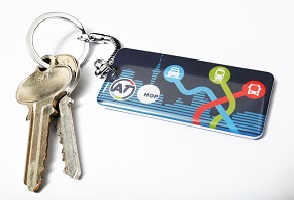
AT Mobile – In late November AT plan to release an update to their mobile app that will allow people to see their HOP balances.
AT Website – AT’s website, and especially the metro section, is awful and confusing to use. They say they’re started development on a new ‘look and feel’ and navigation which will also be more mobile friendly – 65% of users are doing so from a mobile. They say the changes will also see the PDF timetables replaced with dynamic tables. I hope both options are available as I often find it useful to have my regular ones saved offline on my phone. Below is an example of what the new metro landing page will look like.
Bus experience – They’re” looking to introduce audio announcements and Wi-Fi capability on buses” and a trial on the 380 airporter was started in October.
Lost property – They want to improve the process for lost property, instead of their current process of saying they don’t deal with it, talk to the operator. The image represents one month’s worth of lost property from what they say is one of many locations across Auckland.
Technology
Red Light Cameras – AT have been showcasing their improving capability of using CCTV for video analytics in many of their board reports this year. This month they’re taking about red light cameras again and note they’re giving more intersections these abilities. The analytics are showing not just how many ran red lights but how late they were too.
While on the topic of red light running, they also include this in a separate section on the results of the cameras being enforced by the police.
Major Projects
A table updating progress on a large number of projects is included.
Public Transport
On Demand Trial – This month AT expect to launch their on-demand trial shuttle in Devonport
The latest PT Satisfaction results are available and remain high close to record levels.
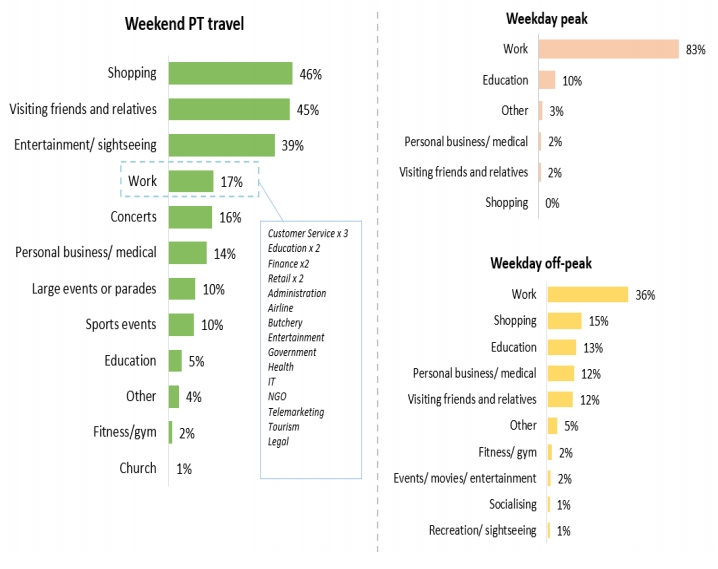




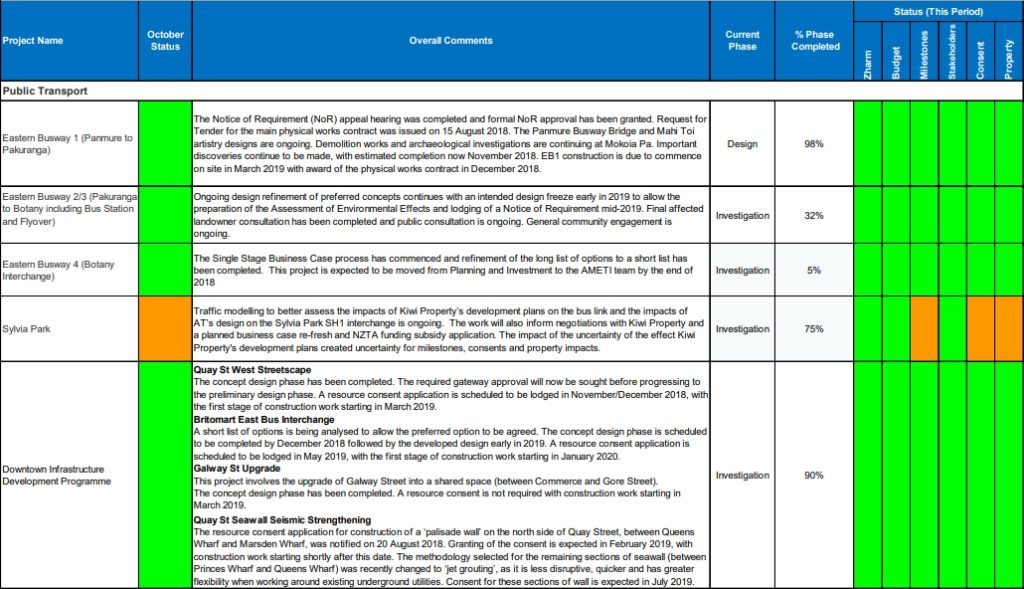

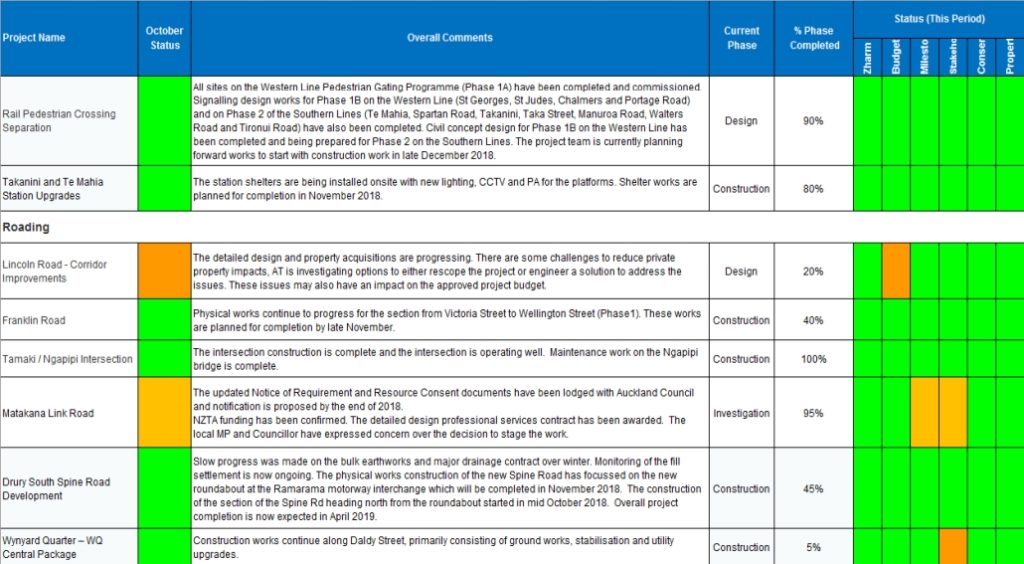
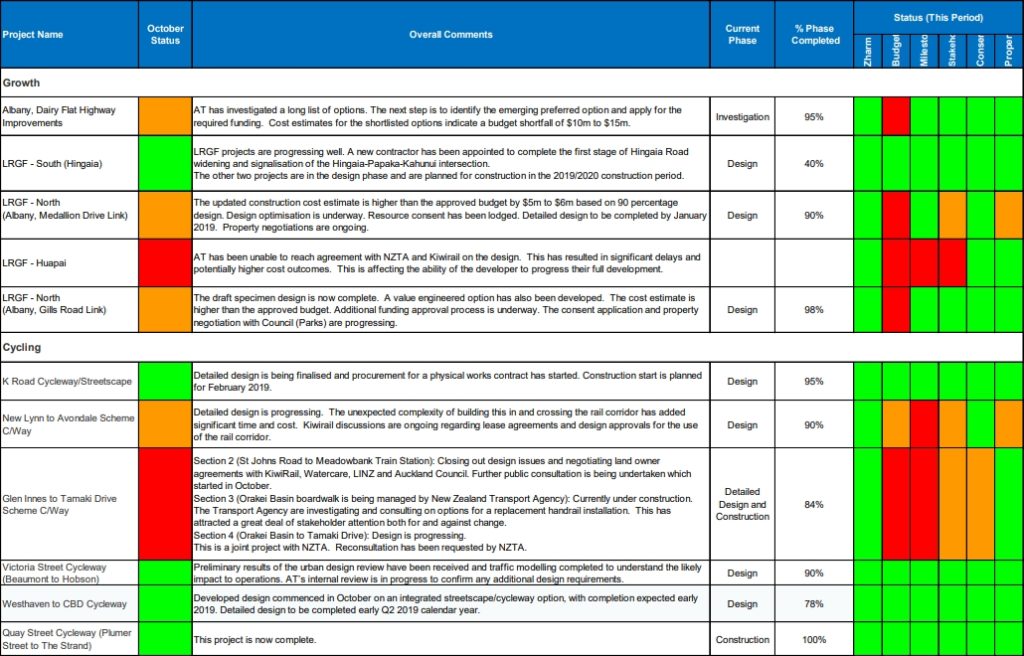
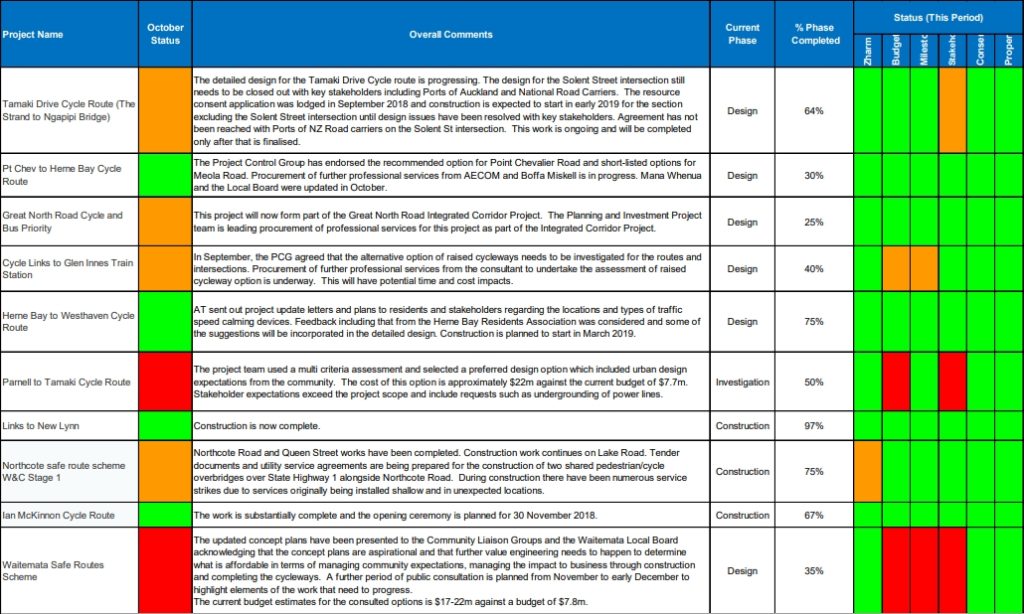
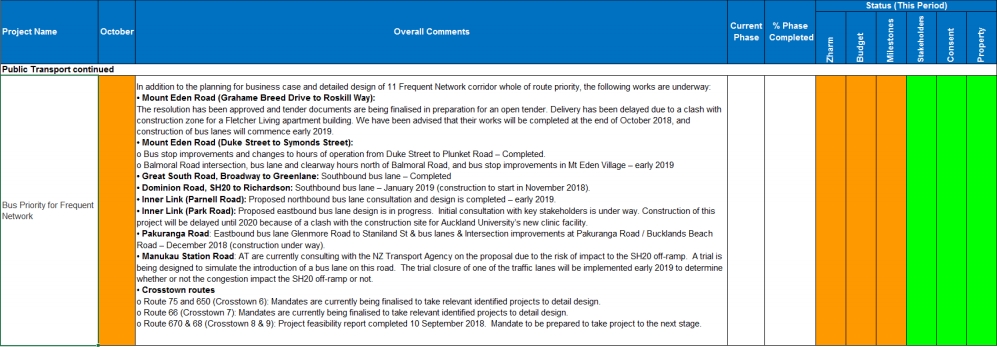
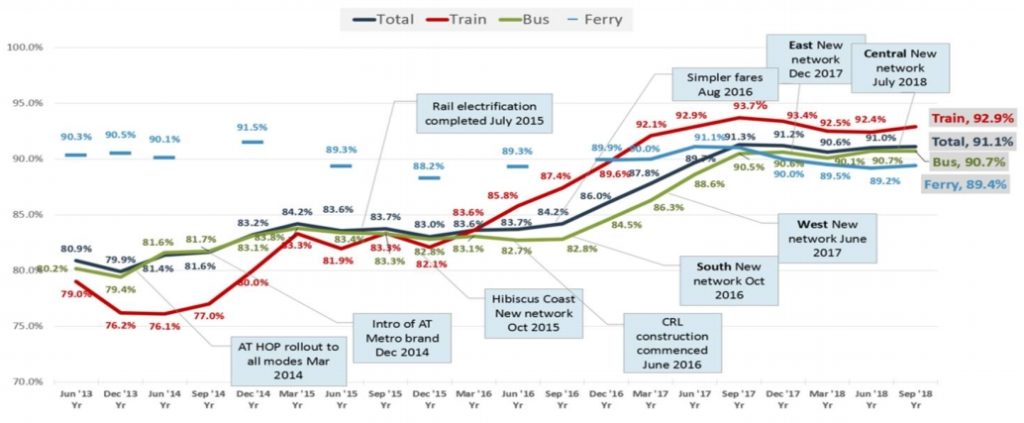

 Processing...
Processing...
For those who use ferries, lets hope if Northcote is rebuilt it is lengthened greatly with a landing platform to avoid the quadruple dog leg/stop on a dime manoeuvres the ferries have to do to dock. Incredibly time consuming and does little for PT the way its set up. If it is to remain the same to “save money”, ditch it and really save some money. The fact is if the Skypath is ever built it will be redundant anyway.
HOP is now actually working quite well with the exception of the lag when tagging on and off on most machines. Why the need for a new system?
Pity Parnell station is only sort of finished rather than the platform connections it was supposed to have. Still a hell of a hike from the up platform to Parnell village. And why the delay to sign off the path to Carlaw because its been completed for a while now. The mud track is not much fun to be honest!
What is happening the relocation of Takanini platform? If shelters are being installed, that project is obviously done for.
And please, some bricks and mortar progress on LR, not a meeting to schedule another meeting to schedule another meeting……
Selfishly, I wouldn’t mind the Northcote ferry being stopped; as a regular Birkenhead ferry user I’ve got used to the reduced journey time and increased punctuality.
If it is reopened then I hope it is a fully all-weather facility that allows boats to moor up consistently quickly. It would be hard though, to justify the expense involved for the low numbers who have used Northcote Point in the past. In part that might be a Catch-22 situation of the service being unreliable and therefore unattractive to users, and the usage so low the justification to improve the reliability is not there.
The only possible significant opportunity for growing passenger numbers that I can see is actually Skypath. I can imagine a lot of tourists wanting to walk the route from the city and then catch a ferry back again. How ironic would it be if the only thing that can save the ferry service is Skypath, and the resident’s association ends up supporting it?
Ticketing technology moves so fast nowadays it’s important to invest progressively. Things like scannable paper tickets, phone/bankcard payment, and account-based (rather than cardbased) ticketing systems are all things they’re likely to explore.
P.s. Hop moved Auckland from bad to decent. But we want to continue to improve ..
And almost none of the issues I raised in my post about the issues HOP raises for young people have been resolved. The technical sides of HOP do contribute a little to those problems.
I wonder how many Aucklanders would rather take a comfortable 10 min ferry ride, or a steep 45 min walk to the city.
I don’t think anyone can assume user numbers on any cycle path, especially after we now know the numbers have been overestimated and AT’s own cycling expert has said ‘most cycle projects require estimates for a 40-year investment using variables that can be hard to predict into the future’.
https://www.nzherald.co.nz/nz/news/article.cfm?c_id=1&objectid=12158815
“”In undertaking this review, the audit and assurance team was informed that Auckland Transport forecast cyclist user numbers were based on cyclist user estimates forecast in 2026,” a spokesman said.
The review of 54 urban cycling projects nationwide said the way cyclist numbers were estimated were considered “acceptable and robust”, including estimating numbers at a future date.”
Bernard Orsman is really good at cherry picking NZTA’s reviews to paint a picture that is completely at odds wit the actual findings of the reviews. A good approach with his articles is to always scroll to the end and read the bit where he writes the truth to avoid scrutiny from media watchdogs.
Does anyone know if there are still AT HOP key cards available? The website used to have a counter but now it just says ‘unavailable’ 🙁
Thanks Matt. Really informative. I realise I’m not the target audience for the Police Cameras report and those for whom it is designed may understand what the value “Yes” in the column “Enforcement October 2018” means. I can only guess. Also it would be great if there was a simple %age expression of the Total Offences against Total Vehicles. Few of us can divide 132 by 85326 in our heads and get the right value and number of decimal places. it’s 0.15% or ~one in every 650 vehicles.
I wondered that as well. I assumed it means they had police on site at some point during that period.
The Police have stated that they ONLY have staff to monitor 6 cameras at a time. The Yes’s count to six. I assumed that those were the focus for the month of October.
This STILL hasn’t been resolved?
I just can’t understand that argument. I think a red light ticket is $150 – plenty of money to cover the cost of more staff. God even if it took a staff member a whole day to process each ticket it would still be cost neutral.
If they want I can build them some software to do 90% of the tickets for them.
The Police get $0 from any tickets they issue.
Someone gets the revenue. And someone is responsible for adequately staffing the Police. Isn’t there any connection between these two?
roeland – Agree, the risk posed by red light running means this needs to be better funded, whether the money is actually the money from the fines is largely irrelevant.
Meanwhile we’re spending 76 million buckaroos on the Matakana Link Road.
Something is rotten.
How can a short, simple road with no major earthworks, bridges, etc, possibly cost that much?
I thought it did have bridges. Anyway, imagine if they put a quarter of that money into bus services in the area instead and prioritised it over all the cars…
I’d be more impressed if red-light running came with demerit points. I don’t have a problem with fines, but demerit points lead to the specific possibility that repeat offenders may lose their licences. My sense is that this is probably an even bigger disincentive than a fine.
+1
Or hours of community service. A fine has less impact on a wealthier person, and the experience might broaden their perspectives, if their perspectives need broadening. In any case, it’d be an opportunity to serve the community, after having placed the community at risk, and an opportunity to reflect on that.
It does, 10 demerits.
Going by those very low stats of vehicles running reds, I would say a fair few of those camera activation’s will be emergency vehicles attending incidents.
I agree with Heidi, demerits is a blunt instrument, something far more useful like she suggests would be good.
Demerits apply to drivers caught by police. They don’t apply to camera infringements however.
In that case the infringement is against the vehicle, and liability falls to the vehicle owner to pay it. Same as a parking infringement, it’s a ticket against the vehicle, not the person.
So red light camera means not demerits. Run a red in front of a cop, yes demerits.
why will skypath make a ferry option redundant?
I frequently use the ped crossing in the report image. The picture is alarming but as the stats show way too common. If I’m reading it correctly the worst offending corresponds to all the kids coming out of the school right next to the crossing.
Glen Innes to Tamaki Drive with a “red” status for October.
This is a poster child for AT incompetence, years behind schedule, nowhere near budget and still going nowhere fast.
I actually saw someone working on it last week, first time in a long time!
Still need a few more months to discuss the handrail apparently?
I have no idea why we’re about to take the brand new handrail on section 3 down and replace it because some bored people don’t like it.
The failure to make any progress on Section 2 for 3 years is criminal, it’s left the first section orphaned and disconnected from anything, little wonder it’s usage figures are dreadful.
How hard can it be to build a cycle path here ? Apparently it’s a 2 year construction from when they finally start, leaving the whole project about 5 years late.
I do not know about that specific case but agencies are still building and consenting handrails and suchlike that do not meet disability access standards.
I expect free wi-fi on public transport might be a major boost for PT usage. Myself, I’ve never owned a smartphone but everyone else does. If you are commuting by car (it seems seems popular) swapping to a bus so you can access the internet will be appealing even if the cost of travel is (on the face of it – my kids only think of fuel) similar and the journey time longer.
With bigger data bundles becoming a lot cheaper for 4G in NZ (finally but still nowhere near US/Europe/Asia prices) I don’t think it will have too much impact on PT useage. It’s nice to have for sure, but PT Wifi I imagine would be most beneficial for work Laptops and Tablets, which is easier on a Ferry or quiet train but not so easy on a bus 🙂
Definitely a nice to have though, its 2018 after all.
to work on laptop, just hotspot to your phone. No need to (typically slow and unreliable) public wifi
Prepay & Low wage and student, child users & their parents will appreciate wifi.
While ANY red light running is a concern the breakdown of how big an offence it is is interesting.
[based on how many seconds late clearing the intersection they are].
I base my assumption on the old rule if you don’t clear the intersection by the time the light goes red you are breaking the law and/or could have/should have stopped in time.
70% of the offences shown in their dashboard occur in the 0-1 second bracket, by that brackets name I assume that means the vehicle was in the intersection but hadn’t cleared the other side of the intersection by the time the light went red, and but did so 1 second or less after the light had turned red.
If so while not ideal, its but a minor safety infraction. but would suggest the vehicle should have stopped in time before entering the intersection. So could get a ticket for sure.
Rather than: “1 second or less” means they entered the intersection within 1 second of the light on their side of the intersection having gone red. [all lights go red at the same time but I mean the one before they enter the intersection goes red in front of them meaning you’ve got to stop].
Because if that is true, then those 3+ second “late runners” truly are frightening, Because the green light would be lit for the opposing traffic by then for sure. And those guys would be accidents in motion/waiting to happen.
In actuality I suspect many of the red runners probably are actually guilty of trying to enter an intersection where the exit is blocked because the traffic is stopped or moving very slowly, meaning when the light goes red, they’re still oozing across it/stuck in the intersection. That is an offense too – as you’re not supposed to enter an intersection if your exit is blocked. Whether that’s a “red light” running situation or not I don’t know.
I suspect that type of offense comes under a different part of the road code.
But it is still extremely prevalent in Auckland traffic.
One thing is for sure, red light running, like driving in bus lanes it is “contagious” – as soon a few do it, it spreads quickly and lots more people do it.
But clamping down, needs to be visibly enforced to act as a deterrent.
Getting a ticket in the mail after the fact on video evidence alone is not so effective, and lets the driver avoid the demerit points being sheeted home to them so easily.
I reckon the trick is to have a large display board at each intersection stating XXX red light tickets issued this week/month/year. That way violators see that folks ARE being caught even if looks like they are not.
Might work for bus lanes too. Show it at the start of each bus lane. Folks will get the idea pretty quick that its not a good idea even if you can’t see the cameras.
Can anyone clarify Greg’s question of whether the time measurements for the red light running refers to how long after the beginning of the red light the drivers entered the intersection, or cleared it?
It’s an offence to run an orange light too if it can be proved you could have stopped in time, I.e. didn’t hit the gas instead!
The law around red light running is in relation to when you enter an intersection, not when you leave it. You cannot enter an intersection if the light is red and you must stop if it safe to do so if the light is orange. It is possible for a long vehicle that is turning (so it will be reasonably slow) to enter an intersection legally and still not have made it through once the other lights go green.
Yes. And the camera image of the crossing is set up to clearly show the car as it enters the intersection, not leaves the intersection. So I’d assume that this is what’s measured.
Wow! $0.55m for transitional rail Papakura to Pukekohe, that a bargain for getting the electric overhead installed.
What do you reckon it covers? Costs of undertaking due diligence on the risks involved in asking PR companies to tender for the job of all communications about why it’s useful to undertake a cost benefit analysis of whether it’s worth doing a pre-feasibility study about staging the electrification?
It’s for a detailed business case, not construction.
Detailed business case for what? Surely not rail electrification from Pak to Puk? Hasn’t this gumt already decided to do the electric so who would a detailed business case be for and who would prepare it, inspect it and use it? Isnt it all gumt business? Half million, who receives this and who does it come from? Ratepayers?
It is shown as 100% FAR ( funding assistance rate) which means that NZTA is funding the entire cost of the Detailed Business Case. The DBC is required by NZTA to identify the preferred scheme and cost of the Pukekohe -Papakura electrification Project. This may include assessment of the costs and benefits of options such as whether to future proof for possible future triple tracking .
The detailed business case will be for electrification and associated works. It will define the scope for implementation. For this project, it will probably include:
Should the Drury over bridge on SH1 be widened to allow triple or quad tracking in the future?
Should passing loops or partial triple tracking be included?
Where should any new stations go?
How will the station be built? (Island or side platforms, freight bypasses included, park and rides, feeder bus station arrangements, cycle parking)
Should level crossings be grade separated or closed?
While the government have committed to the project, we don’t actually know what the project will look like.
Disclosure: I;m not involved in this business case, but I have been involved in a few that use the NZTA framework.
Does anyone know why AT’s Statement of Intent is in the Closed section of their meeting?
Chuckle. I’d guess that anything in the Letter of Expectation and other documents that make Council’s wishes clear (eg the Auckland Plan) that hasn’t been put into the SOI, was not missed by accident. They’ll need to discuss how to manage a response on the things that Goff has picked up on in a way that minimises risk to AT.
“To protect information that will soon be publicly available” does not even sound like a legit reason. How does that fly?
I guess it means they would prefer to give a media release giving the background behind changes instead of having journalists pick up and report a few facts and completely miss? Would probably be wise with some things.
That was supposed to read “… and completely miss *the context* “
Don’t know if someone’s mentioned already as haven’t read all the comments but notice that red light running graph of Onewa Rd has by far the worst count around the afternoon school rush 3pm.
Covers a weekend as well though but Friday is the worst.
Interactive bus route information – This is long overdue.
To research the routes, it is currently a time consuming process and requires some brain power.
It simply doesn’t work if I am outside with a phone with very little time.
Ideally the interactive bus map should have a summary map view with all bus routes. Zooming in or clicking the route will shows more detail information, ideally real time information.
The map should also shows the exact location of the bus stops with direction.
Am i understanding the cycling investment correctly? We are spending $11Million dollars to do some business cases? Or is that the total value of the projects should they go ahead once the business case is done?
Looks like business cases and design. It’s a huge number of routes by the sounds of it.
My question is will AT and the HCC/WRC be having discussions over the use of HOP over their card system on the Hamilton to Auckland train when it gets up and running from next October “2019” or will they have to use both systems ? .
Did you note “AT is working alongside a number of internal and external stakeholders to develop a feasible operational plan for the introduction of passenger rail services from Hamilton to Auckland, currently planned for introduction in 2020.”
Can anyone see my glasses in that pile of lost property….I couldn’t 🙁